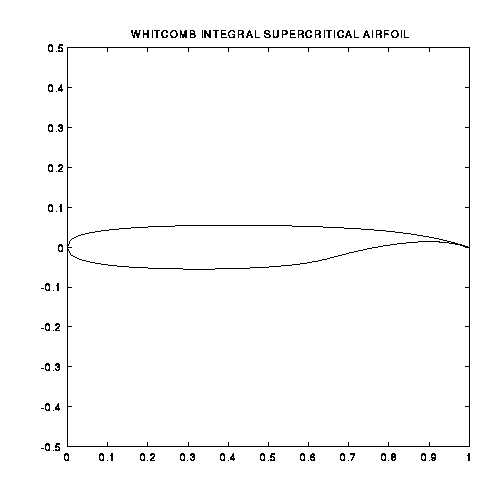|
||||||||||
|
|
||||||||||
|
||||||||||
|
|
||||||||||
To be more precise in this discussion, we need to introduce the terms "Mach number," "shock wave," and "transonic." The Mach number is simply a ratio of the object's airspeed to the speed of sound at the current altitude. Thus, an aircraft flying at half the speed of sound is said to be flying at Mach 0.5 while an aircraft flying at the speed of sound is said to be flying sonic, or at Mach 1. When the flow over any portion of a body in flight reaches Mach 1, a shock wave will be created at that point. Across the shock, the pressure and density of the air increase significantly resulting in large increases in drag. The range of speeds over which the flow velocity over a body is a mixture of subsonic (i.e. less than Mach 1) and supersonic (i.e. greater than Mach 1) is called transonic. Although the exact range of transonic Mach numbers will vary for different aircraft configurations and operating conditions, the transonic regime is generally said to be between Mach 0.7 or 0.8 and Mach 1.2 or 1.3.
Now the first question you may ask is why will the airflow be Mach 1 at some point on a body when the overall airflow (or "freestream" flow) is only at Mach 0.7 or 0.8. The reason for this is rather simple. Recall that an airfoil produces lift because of its curved shape. Air flows faster over the top of the airfoil than the bottom because the top has greater curvature. Higher speed means lower pressure, and this difference in pressure between the upper and lower surfaces generates lift. Thus, since the flow accelerates over the top of an airfoil, it follows naturally that a point here can reach Mach 1 when the freestream value is much lower. The freestream Mach number at which the speed just reaches Mach 1 at this solitary point on the body is called the "critical Mach number."
As the freestream Mach number increases above the critical Mach number, "bubbles" of supersonic flow are created over the upper and lower surfaces of the airfoil, as illustrated here. Note that each bubble is accompanied by a shock normal (i.e. perpendicular) to the surface of the airfoil, or a so-called normal shock. This is the strongest type of shock wave since it generates the largest variations in pressure and density. These shocks slow the airflow thereby increasing pressure and creating an "adverse pressure gradient." This gradient may result in a rapid separation of the airflow from the surface of the airfoil. The resulting turbulent wake created by such a separation causes a rapid increase in drag known as wave drag. The Mach number at which separation begins to occur is known as the "drag divergence Mach number."
Several methods exist to reduce wave drag, including the use of swept wings, slender or thin bodies, and supercritical airfoils. These airfoils have critical Mach numbers very close to one (hence the term supercritical) thereby delaying and reducing the large increase in drag due to wave drag. An example of such an airfoil is shown below.

The basic design approach behind these shapes is to flatten the upper surface of the airfoil to reduce flow acceleration and to use a highly cambered aft section to generate the majority of the lift. The disadvantage of this approach is that aft-loaded wings shift the center of lift back which necessitates moving the wings forward. This design tradeoff results in larger pitching moments, the need for larger and heavier control surfaces, and the need for stronger and heavier wing structures.
To give some idea of the practical benefit of the supercritical airfoil, Air Force and NASA researchers under the
auspices of the Transonic Aircraft Technology (TACT) program modified a basic
F-111 bomber and replaced the existing NACA 64-210 wing
airfoil with a supercritical shape of equal thickness. In so doing, they managed to increase the drag divergence
Mach number by 16%, from Mach 0.76 to Mach 0.88. This example illustrates how significant the use of supercritical
airfoils can be in improving the performance of aircraft cruising in the transonic regime.
- answer by Jeff Scott, 3 December 2000
Related Topics:
I need the name and an illustration of the Boeing 757-200 wing airfoil section.
What type of airfoil is used on the F-22 Raptor? What is its name?
Read More Articles:


|
Aircraft | Design | Ask Us | Shop | Search |

|
|
| About Us | Contact Us | Copyright © 1997- | |||
|
|
|||